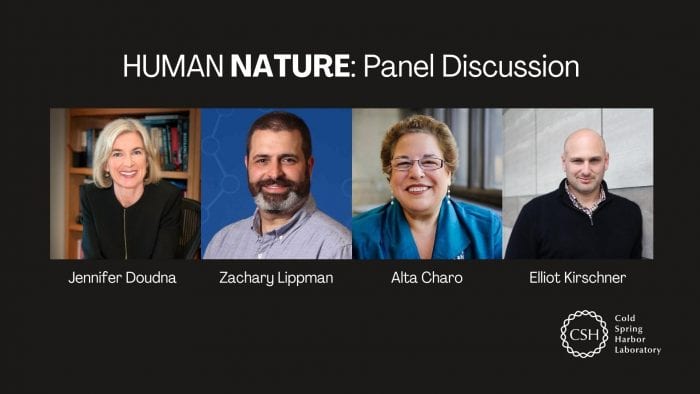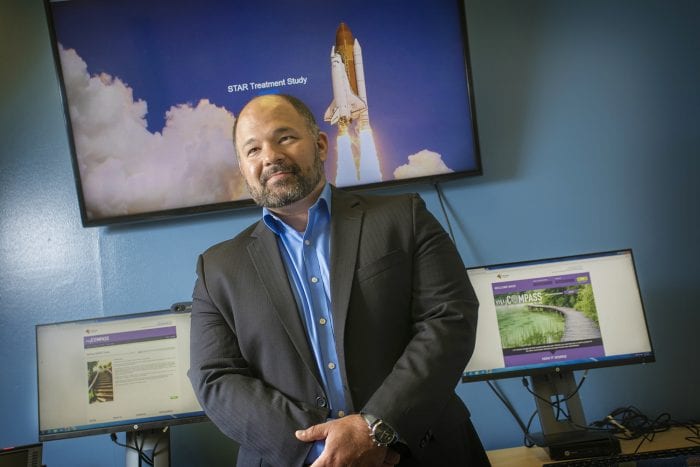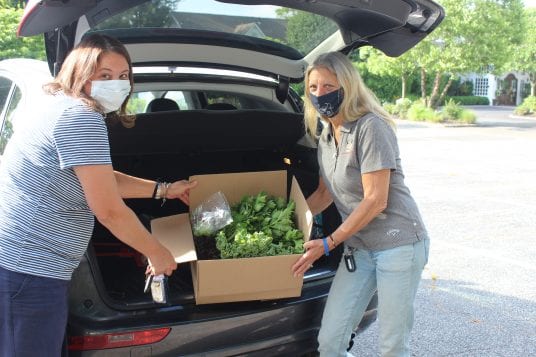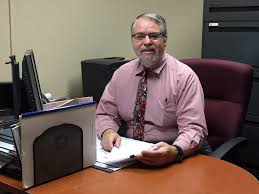Join Cold Spring Harbor Laboratory for an online live panel Q&A discussion via Zoom about the documentary film, “Human Nature, on Monday, Aug. 17 at 6 p.m. Moderated by Elliot Kirschner, panelists Jennifer Doudna, Alta Charo, Elliot Kirschner, and Zachary Lippman will discuss the story of CRISPR genome engineering as the biggest tech revolution of the 21st Century with far-reaching implications for science, ethics, and all of humanity. Visit www.cshl.edu for link. Call 516-367-8800 for more info.
Life Lines: When should we celebrate a discovery and not a discoverer?
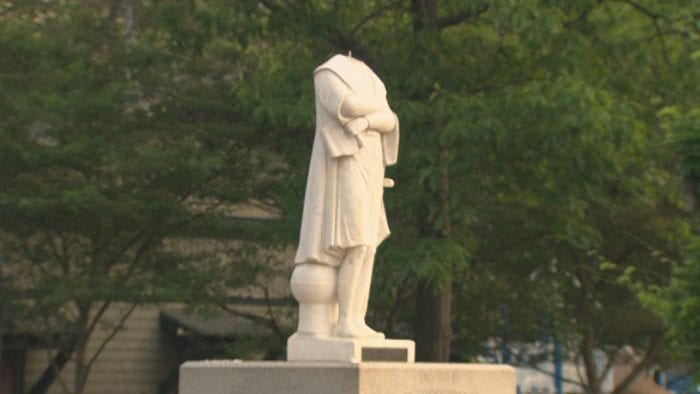
By Elof Axel Carlson

I can accept the toppling of statues of dictators and those who were traitors and I can see as justified the removal of Confederate flags from public places. People whose personal deeds were heinous to Americans, like Confederate generals, or Benedict Arnold, have few virtues that can compensate for the major actions associated with their names.
It is more difficult for me to remove Columbus’s name from cities and our national celebrations of the opening up of the New World to Europe. The history of colonization is as old as history. Kings conquered whether in biblical times or in the fifteenth century. If all present occupants are colonizers and descendants of colonizers, should they go back to the countries that their ancestors left? Where would it end? In the Middle East when all the countries of the world were in the Middle East?
A similar difficulty is honoring a scientist for a major contribution to knowledge. Good science can be done by people of any ideology, religion, or ethnicity. Good science can be done in countries led by dictators. The scientists in those countries are also patriotic to their countries. They may also vary in their personalities regardless of how their countries are governed. A good scientist can make major contributions to humanity while being a cheating spouse, a tyrant as a mentor, a sexist, or a bigot.
I enjoy reading a lot about science and scientists. Most people are not saints. I am reminded of a phrase I learned in school — “most heroes have feet of clay.” It is important that a work of science is independent of the scientist’s personal behavior and beliefs. Often those beliefs are learned by the scientist who is shaped by the culture in which he or she resides.
In the 19th and 20th centuries most people were raised with racial theories that were discriminatory and prevailing views of human differences were based on what turned out to be false assumptions.
Virtually every educated person raised in the 1800s and early 1900s believed there were classes of people who were social failures. They called them paupers or degenerates. They falsely believed that they had defective heredity although genetics was not a science until the twentieth century. Some believed this defective heredity was caused by bad environments and could be reversed by good environments. Some believed the damage was irreversible except through draconian measures by laws forbidding their marriage or even worse, by sterilizing them as unfit to reproduce. It led to the “negative eugenics” movement that we reject today.
Very different was the “positive eugenics” movement that led to a conscious use of assortative mating, urging those who were successful, healthy, long lived, and talented to marry similar well-endowed spouses. Even W. E. Dubois embraced this positive eugenics outlook in 1903 calling it the “talented tenth” who would lead Black people out of the subjugated state most found themselves to be through neglect and bias of white society.
I believe we need to weigh a lot of issues in making decisions about renaming buildings, putting person’s portraits on currency, and naming our cities, high schools, and other public places. Should we avoid buying Volkswagens because Hitler wanted German automakers to make a “people’s car?” Should we avoid eating cream puffs because they were Hitler’s favorite dessert?
Humans live with diversity and not all that diversity is what we choose for our own lifestyle. We live with contradictory values, sometimes having rigid rules of behavior where right and wrong are clear-cut (don’t lie, cheat, or kill others) and other times we practice utilitarian ethics and go with “the greatest good for the greatest number.” Sometimes we trample on basic human rights in our self-serving interests like dropping atomic bombs on two Japanese cities filled with mostly noncombatant men, women and children.
Elof Axel Carlson is a distinguished teaching professor emeritus in the Department of Biochemistry and Cell Biology at Stony Brook University.
Medical Compass: Keep your mind sharp by moving your feet
Walking’s benefits extend beyond physical fitness
By David Dunaief, M.D.

There is great emphasis on exercise in medicine and in society. We have heard it is good for us ever since we were children in gym class striving for the presidential fitness award.
The average reaction, unfortunately, is an aversion to exercise. As kids, many of us tried to get out of gym class, and as adults, we “want” to exercise, but we “don’t have time.” The result of this is a nation of couch potatoes. I once heard that the couch is the worst deep-fried food. It perpetuates inactivity, especially when watching TV. Even sleeping burns more calories.
I think part of the problem, generally, is that we don’t know what type of exercise is best and how long and frequently to do it. These days, for many who depend on gyms, dance studios and other exercise-related facilities for exercise are struggling to find meaningful substitutes.
Well, guess what? There is an easy way to get tremendous benefit with very little time involved. You don’t need expensive equipment, and you don’t have to join a gym. You can sharpen your wits with your feet.
Jane Brody has written in The New York Times’ Science Times about Esther Tuttle. Esther was 99 years old, sharp as a tack and was independently mobile, with no aids needed. She continued to stay active by walking in the morning for 30 minutes and then walking again in the afternoon. The skeptic might say that this is a nice story, but its value is anecdotal at best.
Well, evidence-based medicine backs up her claim that walking is a rudimentary and simple way to get exercise that shows incredible benefits. One mile of walking a day will help keep the doctor away.
Walking has a powerful effect on preserving brain function and even growing certain areas of the brain (1). Walking between six and nine miles a week, or just one mile a day, reduced the risk of cognitive impairment over 13 years and actually increased the amount of gray matter tissue in the brain over nine years.
Those participants who had an increase in brain tissue volume had a substantially reduced risk of developing cognitive impairment. Interestingly, the parts of the brain that grew included the hippocampus, involved with memory, and the frontal cortex, involved with short-term memory and executive decision making. There were 299 participants who had a mean age of 78 and were dementia free at the start of the trial. Imagine if you started earlier?
In yet another study, moderate exercise reduced the risk of mild cognitive impairment with exercise begun in mid-to-late life (2).
Even better news is that, if you’re pressed for time or if you’re building up your stamina, you can split a mile into two half-mile increments. How long does it take you to walk a half-mile? You’ll be surprised at how much better you will feel — and how much sharper your thinking is.
This is a terrific strategy to get you off the couch or away from your computer, another hazard for many of us working or schooling from home. Set an alarm for specific points throughout the day and use that as a prompt to get up and walk, even if only for 15 minutes. The miles will add up quickly.
In addition to the mental acuity benefits, this may also help with your psychological health, giving you a mental break from endless Zoom calls and your eyes a break from endless screens.
If you ratchet up the exercise to running, a study showed that mood also improves, mollifying anger (3). The act of running actually increases your serotonin levels, a hormone that, when low, can make people agitated or angry. So, exercise may actually help you get your aggressions out.
Walking has other benefits as well. We’ve all heard about the importance of doing weight-bearing exercise to prevent osteoporosis and osteoporotic fractures. The movie “WALL-E” even did a spoof on this, projecting a future where people lived in their movable recliners. The result was a human skeletal structure that had receded over the generations from lack of use. Although it was tongue-in-cheek, it wasn’t too far from the truth; if you don’t use them, bones weaken and break. Walking is a weight-bearing exercise that helps strengthen your joints, bones and muscles.
So, remember, use your feet to keep your mind sharp. Activities like walking will help you keep a positive attitude, preserve your bones and help increase the plasticity of your brain.
References:
(1) Neurology Oct 2010, 75 (16) 1415-1422. (2) Arch Neurol. 2010;67(1):80-86. (3) J Sport Exerc Psychol. 2010 Apr;32(2):253-261.
Dr. David Dunaief is a speaker, author and local lifestyle medicine physician focusing on the integration of medicine, nutrition, fitness and stress management. For further information, visit www.medicalcompassmd.com.
SBU launches coronavirus support group
By Melissa Arnold
It’s been a rough year for all of us, that’s for sure, but no one has felt the sting of the COVID-19 pandemic more keenly than those who have contracted the virus.
As of Aug. 6, more than 43,000 Suffolk County residents have tested positive for COVID-19, and many more have faced the virus without an official diagnosis. Its symptoms can vary widely, from mild fatigue and chills to flu-like illnesses or even respiratory distress requiring hospital care.
The virus is unpredictable, and dealing with symptoms along with a quarantine, lengthy recovery and uncertain long-term effects is daunting. It’s only natural that many will experience tough emotions along the way.
Stony Brook Medicine is now offering a virtual support group for past and present COVID-19 patients. The weekly sessions will give patients a space to discuss their experiences and feelings while learning healthy coping mechanisms.
The support group is hosted by the Mind-Body Clinical Research Center at the Stony Brook Renaissance School of Medicine. Under the direction of founder Dr. Adam Gonzalez, the center focuses on the integration of mental and physical health for overall wellbeing.
“We wanted to see what we could do to support these members of the community who had COVID-19 and shared that they were feeling anxious, isolated and afraid of transmitting the virus to others,” Gonzalez explained. “Our goal is to provide a telehealth platform for patients to come together and bolster one another, exchange information, and learn skills to cope with stress brought on by their illness.”
Leading the group is Jenna Palladino, a licensed clinical psychologist and clinical assistant professor of psychiatry. Palladino is hopeful that participants will feel comfortable opening up about their struggles with COVID-19 in the company of others who know what it’s like.
“Research supports the idea that sharing your story helps you to work through the emotions related to it. And talking to others experiencing similar feelings helps to normalize the experience,” Palladino said. “It’s important for people going through COVID-19 to know that they’re not alone.”
The initial group is expected to run for 12 weeks, covering topics like coping with isolation, deep breathing, managing anxiety, muscle relaxation and mindfulness, to name a few.
Palladino is also leaving plenty of room for participants to ask questions and discuss topics that interest them, allowing the group to better meet their specific needs and concerns.
Gonzalez added that the support group will act as a pilot program for researchers seeking to understand the experiences of people living with COVID-19. They’ll collect data at the beginning and end of the program to see how patients are doing, if the support group was beneficial and how it can be improved.
While the initial group is limited to 10 patients, Palladino and her team are prepared to quickly begin additional groups if there is an interest, she said.
The virtual COVID-19 support group will be held from 6 to 7 p.m. Thursdays via the free Microsoft Teams video conferencing platform. The group is limited to 10 participants at a time. Registration is required to attend by calling 631-632-8657. For more information and resources, visit www.stonybrookmedicine.edu/COVID19support.
SBU’s Klaus Mueller uses AI to find counties with viral vulnerabilities

By Daniel Dunaief
About 40 percent of the counties in the United States are at high risk for COVID-19 and related death rates, according to a new computer program created by Stony Brook University Computer Science Professor Klaus Mueller.
Putting together data from the over 3,000 counties throughout the United States, Mueller used a computer program he created with a start up company he co-founded, called Akai Kaeru LLC, to search for counties that present factors that would put them at greater risk for an increase in COVID-19 deaths.
Analyzing data from 500 factors, the scientists found that death rates increased in communities with a combination of traits that are catalytic for the spread and fatality rate of the virus. These include sparsely populated counties with a poor and aging population; counties with sleep-deprived, low-educated, low-insured residents; and wealthy counties with high home ownership and increasing housing debt, among other factors.
Many of the counties are in the southern United States. In June, Mississippi, Louisiana and Georgia had the highest density of high-risk counties at a coverage of 80 to 90 percent.
Mueller said he considered this approach in late April. When the data from the Centers for Disease Control and Prevention came online, the group did its first test run on May 10th, which ended on June 10th.
When he looked at the June 10th mortality rates throughout the country, he was amazed at how effectively the patterns based on the conditions from the computer algorithm predicted increases.
To be sure, not all of the counties that fit one or more of these sets of conditions had high death rates in May, but others that were similar had. The preconditions existed, but the spark to cause those deaths hadn’t occurred, Mueller said.
“In June, some of these so far untouched counties caught the virus and they flared up like a tinderbox,” Mueller explained in an email. “This phenomenon continued in July for other counties that had escaped it so far but had the critical condition sets.”
In June, some of the counties that had characteristics that made them vulnerable caught the virus, Mueller explained.
Mueller anticipates a rapid increase in August in counties in Florida and Texas, in which the virus has spread and the conditions for increased mortality are prevalent.
“There are counties in these states that from the socio-economic perspective look a lot like those that already experienced great tragedy,” he wrote.
Mueller explained that people in many counties think they’re not at risk even if their neighbors are. The danger, however, comes from a spark, such as a visit by someone carrying the virus, that increases the infection, hospital and mortality rates.
Indeed, in wealthy counties where residents are stretched thin by the costs needed to maintain their homes, the incidence of illness and death is also higher. In part, that reflects how some of the people in these communities cut corners in terms of health insurance.
Mueller said Akai Kaeru, which means “red frog” in Japanese, is working on a dashboard that will be accessible from a web browser where users can click on a map of counties and see the risk and the patterns that define it. The staff at Akai Kaeru, which includes three principals and four interns, have virtual team meetings each weekday at 11 am. The dashboard they create can help residents see the other counties that share similar characteristics. Users can also compare the death rate in these counties to the average death rate in the United States.
While the observations of trends linking characteristics of a county with COVID-related health challenges could be useful for county and state planners, Mueller acknowledged that these observations are “just a start. Now, you know where to look, which is way better than before.”
The data could be useful for policy and law makers as well as for actuaries at life insurance companies.
Mueller believes this artificial intelligence tool acts like a magnet that pulls out the proverbial needle from the data haystack. Local leaders can use the dashboard to see the critical conditions for their counties. They can try to find solutions to remove those conditions.
Demonstrating how the health care system in similar areas became overwhelmed can increase compliance with social distancing and mask-wearing guidelines.
Mueller added that the predictions from the model are only as good as the data he used to analyze trends across the country. He and his team aren’t making these observations or collecting this information themselves.
He said some counties have a lower likelihood than the average of developing a wider contagion. While the entire state doesn’t have the same lower probability of the disease spreading, areas like Montana and Indiana have fewer of the variables that typically combine to create conditions that favor the spread of the virus.
Mueller suggests that the risks from COVID-19 are tied to compliance with policies that reduce the spread of the disease and to the development of a vaccine.
Despite the high infection rate through April and May and the deaths during those unprecedented months, Suffolk County isn’t at the same level of risk as some regions in the south. “Suffolk is much better than those counties in the South and even Westchester, Rockland and adjacent counties in Connecticut and New Jersey,” Mueller said. “But it is not without risk.”
Prior to developing a program to analyze epidemiological trends with COVID, Mueller worked with medical visualization, which included the three-dimensional data of human parts that were generated through computed tomography, or CT.
In his work, the Computer Science professor seeks to find ways to communicate high-dimensional data to the lay population. He has routinely worked on clustering and has partnered with Pacific Northwest, Brookhaven National Laboratory, and health care companies.
Mueller has been at Stony Brook University since 1999. He earned his PhD from Ohio State University. Originally from Germany, he has done considerable work online, including teaching.
He and his wife Akiko, who works on marketing for his company, have an eight-year-old daughter named Nico.
Readers interested in learning more about his research with COVID can find information at the following link: https://akaikaeru.com/covid-19-1.
Movie Review: ‘Ghosts of War’ is just a series of clichés
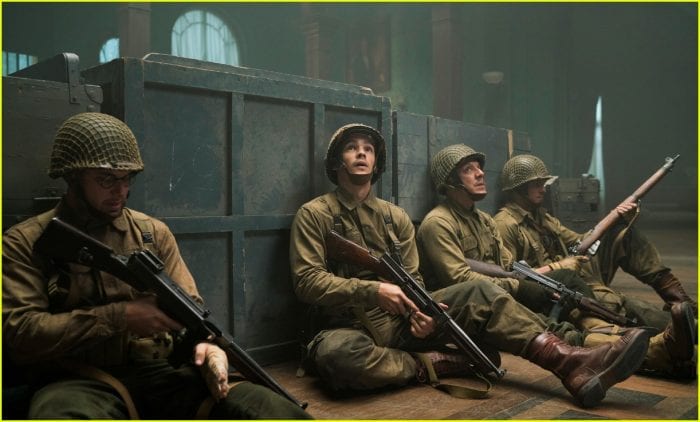
Reviewed by Jeffrey Sanzel
The tagline to the new horror movie Ghosts of War is “The Enemy Isn’t Out There. It’s in Here.” If “in here” meant the studio, I would agree with that. Ghosts of War is presented as a thriller that traces descent into madness. However, writer/director Eric Bress (The Butterfly Effect) misses almost every opportunity to deliver something that is more than just a series of clichés.
The film opens in Nazi occupied France, 1944. The five remaining members of an American troop are ordered to guard a French chateau that was recently occupied by the Nazis. After an opening sequence in which they dispatch a Nazi unit and then aid escaping or refugee concentration camp survivors, they arrive at their destination. (The anachronisms become both clearer and muddier as the film progresses.)
The soldiers who have been holding the mansion until now hightail it out … as if haunted by their experiences there. Subtlety is not Bress’s strong suit. Nor is dialogue or character development.
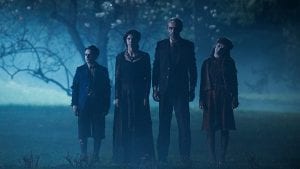
Within minutes, there is a clumping parade of almost every old-dark-house trope: weird stains and burn marks on the carpet; rows of staring dolls; a wine cellar with a strange family photo; a locked trunk; garbled breathing sounds from ornate vent grates; matches blown out without a breath of air; strange voices in locked rooms; a silhouette of a hanged man that disappears when the curtains billow; doors that swing open suddenly; mysterious footsteps overhead; claw marks on the floor; a pentagram in the attic; … and everything accompanied by a swift camera pan and a crash of the soundtrack.
All of this all happens in about fifteen minutes. One then ponders what they’re going to do for the next hour.
Well … they’re going to talk. They’re going to have a vulgar exchange of stories and urban legends; this is to show that they’re “men.” Then they’re going to have serious philosophical discussions about the nature of evil. And still there’s fifty minutes to go — so Bress recycles the strange voices and the odd knocking and adds some screeching ghosts. (There is one clever piece where the banging actually communicates Morse code.)
The shame is that there are real hints of possibility. Clearly, these five men have been damaged by their wartime experiences. The pain lying underneath the bravado could have been harnessed to tell a story about soldiers transitioning from battle to PTSD. But, instead, Ghosts of War is stilted and predictable. Lines like “I’m not sure what I saw” are followed by quasi-intellectual explorations of the supernatural.
A reference to the Ambrose Bierce short story, “An Occurrence at Owl Creek Bridge,” and the possibility that they are dead is neatly connected to their speculation on this being their own personal Hell, forced to relive a loop of the same moments. Again, a great idea that is squandered as they return to the same screams and jumps.
A journal left behind reveals that the castle’s residents had hid Jews before they were caught and brutally murdered by the Nazis. It is their spirits that are trapped in the house. Laying them to rest becomes the soldiers’ quest. There is a brief interlude where a random Nazi patrol enters the house and is dispatched by both the Americans and the ghosts — before the ghosts once again turn on the Americans.
Skylar Astin does his best as the “smart one” — he’s the “smart one” because he’s wearing glasses and plays classical piano. Brenton Thwaites finds a decent if predictable footing as the group leader. Kyle Gallner’s sniper is a bit over-the-top twitchy but he’s the only one given any history, including a monologue about his murder of a group of Hitler Youth.
Theo Rossi and Alan Ritchson are fine with what they are given but don’t make much impression. Unfortunately, none of them seem to have any internal background to drive the characters’ motivations. In addition, they are saddled with so much expositional dialogue about hauntings and earthbound spirits that they become overly articulate and lose any individuality.
In the final fifteen minutes of the film, the theme shifts from horror to almost science fiction. What could become an interesting twist about the power of guilt instead becomes a confused and unrealized concept that builds up to literally — and infuriatingly — no ending. The film stops as it is on the cusp of a possible resolution.
It just
(Like that.)
Rated R, Ghosts of War is now streaming on demand.
Smithtown Children’s Foundation launches Farm to Trunk initiative
Local non-profit pivots fundraising effort and aids local farmers, community, and economy
The Smithtown Children’s Foundation has spent the last twelve years helping local residents in need. Funds are raised primarily by large gathering events. C0VID-19 has canceled all of those events for 2020. “We had to pivot just like every other business. Unfortunately, need is at an all-time high, when our funds are at an all-time low,” said Christine Fitzgerald, President, and Co-Founder of Smithtown Children’s Foundation. “We had to get creative.”
Farm to Trunk is the brainchild of SCF board member and former Nesconset Farmer’s Market Manager, Nancy Vallarella. “COVID related social media posts revealed local residents were ordering product from distributors that were sourcing produce from all over the country. With Long Island’s harvest approaching, why not organize a minimal contact delivery system that would help Long Island farmers, the local economy, and provide the consumer with the freshest, nutrient-packed produce available?” she said.
Red Fox Organic Farms, located on the property of the Sisters of St. Joseph in Brentwood, was the first Long Island farm to join this fundraising program. Jim Adams, Red Fox’s Farm Coordinator remarked,” We are thrilled and so grateful to be working with SCF. It’s just the connection we needed to begin sharing our food with the Long Island community.”
Smithtown resident Dawn Mohrmann has purchased the Red Fox Organic produce box for the past four weeks. “The Farm to Trunk Smithtown Children’s Foundation program has been an easy decision. A great foundation paired with great local, organic, farm-fresh food! Healthy produce for our family is what we look forward to every week,” said Mohrmann.
SCF’s Farm to Trunk will be bringing Sujecki Farms (Calverton), back to Smithtown as an additional produce provider for the Farm to Trunk Fundraiser. “Sujecki Farms has a following here in Smithtown. They have been an anchor in Smithtown’s Farmers’ Market history for over a decade,” said Vallarella. “They are a family that has been farming on Long Island for over 100 years. We welcome their products and are excited to continue to support their farming effort.”
All orders are placed directly with each farm and are delivered to Watermill Caterers, 711 Smithtown Bypass/Rt.347, Smithtown. Smithtown Children’s Foundation volunteers deliver the produce boxes to the customer’s car trunk from the southwest corner of the Watermill’s parking lot every Wednesday from 5:30 to 7 p.m. There is no on-going commitment. Consumers can order week to week.
Information on the program can be found on the Farm to Trunk — Smithtown Children’s Foundation Facebook.
Order links:
Red Fox Organic Farms — https://www.redfoxfarm.farm/product-page/red-fox-box
Sujecki Farms — https://www.sujeckifarms.com/product-page/smithtown-farm-to-trunk-veggie-box
Photos from Nancy Vallarella
Photo of the Week
OSPREY WITH PREY
Falcon Sahin of East Setauket was in the right place at the right time when he spotted an osprey carrying a fish back to a nest in Cranes Neck in early July and captured this incredible shot. He writes, “This was a challenging photo. Had to wait until low tide to get close. But at the end it was worth the wait, getting wet and bitten by mosquitoes. “
Cooking Cove: Some cool recipes for cucumbers
By Barbara Beltrami
Cool as a cucumber. You’ve heard that before. I’m not sure of its derivation but Wikipedia tells me that cucumis sativus originated in India and goes as far back as the Roman Empire when it was popular with the emperor Tiberius, then later was favored in the 8th and 9th centuries by the famed Charlemagne. Fast forward to the 21st century where we still have our lovely cool cucumbers, with their crispiness, crunch and slightly melon-y flavor, the perfect veggie for all kinds of summer fare. I don’t know how Tiberius’s or Charlemagne’s chefs prepared them, but I’ll wager that they didn’t have a cucumber and gin sorbet, tzatziki, as well as a variety of cucumber salads in their repertoire.
Cucumber, Fennel and Gin Sorbet
YIELD: Makes about 3 cups.
INGREDIENTS:
2/3 cup sugar
2/3 cup water
1/2 cup minced fresh fennel leaves
1 tablespoon tarragon leaves
2 large English cucumbers, peeled, seeded and diced
2 tablespoons freshly squeezed lemon juice
3 to 4 tablespoons good quality gin
Cucumber slices for garnish (optional)
DIRECTIONS:
In a small saucepan bring sugar and water to a boil and stir until sugar is completely dissolved. Remove from heat, add fennel and tarragon and let steep 15 minutes. Pour through a fine sieve set over a medium bowl; discard leaves; refrigerate syrup until cold, about 30 minutes or more. In bowl of food processor or in blender puree cucumbers, syrup and lemon juice until smooth; transfer to a bowl, stir in gin, cover and refrigerate 1 1/2 to 2 hours, until very cold. Transfer to an ice cream maker and freeze and churn according to manufacturer’s directions. Place in covered container and store in freezer. When ready to serve scoop into ice cream dishes, garnish with cucumber slices, if using, and serve with ginger snaps.
Cucumber-Honeydew Salad
YIELD: Makes 10 servings
INGREDIENTS:
1 large English (seedless) cucumber, peeled
1 large ripe honeydew melon
1/4 cup freshly squeezed lime juice
Salt and freshly ground black pepper to taste ( but use sparingly)
1/2 cup finely chopped cilantro
2 tablespoons finely chopped mint
3 scallions, thinly sliced
DIRECTIONS:
Dice cucumber; remove seeds and rind and dice honeydew. In a large bowl, whisk together lime juice, salt and pepper. Add cucumber, honeydew, cilantro, mint and scallions; toss to coat thoroughly. Cover and refrigerate up to one hour. Serve cold with fish, meat or poultry.
Cucumber and Radish Chopped Salad with Chick Peas
YIELD: Makes 6 servings
INGREDIENTS:
3 medium ripe tomatoes, diced
3 small cucumbers, peeled and diced
1 yellow bell pepper, seeded and diced
10 radishes, washed, trimmed and diced
One 14-ounce can chick peas, rinsed, drained
1/2 red onion, finely chopped
1/2 cup finely chopped flat leaf parsley
2 tablespoons extra virgin olive oil
2 tablespoons freshly squeezed lemon juice
Coarse salt and freshly ground pepper to taste
DIRECTIONS:
In a large bowl toss together the tomatoes, cucumbers, bell pepper, radishes, chick peas, onion and parsley; cover tightly and chill up to two hours. In a small bowl whisk together oil, lemon juice and salt and pepper. Let salad sit at room temperature for 20 to 30 minutes before tossing with oil-lemon juice mixture. Serve with meat, poultry or fish.
Tzatziki

YIELD: Makes about 1 1/2 cups
INGREDIENTS:
1 large cucumber, peeled, seeded, grated and drained
1/2 pint plain Greek yogurt
1 tablespoon extra virgin olive oil
2 tablespoons finely chopped fresh dill
1 tablespoon finely chopped fresh mint
2 garlic cloves, minced
1 teaspoon finely grated lemon zest
1 1/2 teaspoon freshly squeezed lemon juice
Coarse salt and freshly ground black pepper to taste
DIRECTIONS:
In a medium bowl, whisk together all ingredients. Cover with plastic wrap and refrigerate till ready to use. Serve with pita bread or crudités.
Heckscher Museum of Art names interim director
Michael W. Schantz has stepped down as Executive Director & CEO of The Heckscher Museum of Art in Huntington, fulfilling a ten-year commitment. The Board of Trustees has announced that John E. Coraor, a former Heckscher Museum director, has been named Interim Director.
“We thank Michael for a decade of effective and thoughtful leadership that has continued to propel the Museum forward as a cultural and educational center on Long Island,” said Robin T. Hadley, Chair of the Board of Trustees. During his tenure, Schantz guided the Museum through its most recent accreditation from the American Alliance of Museums, and built a qualified and dedicated staff while leading the Museum into its Centennial year.
John E. Coraor was Director of The Heckscher Museum from 1988 to 2000, and is a current Board member. Coraor begins his role as Interim Director effective immediately. He has more than four decades of professional experience in art and cultural agencies, most recently as Director of Cultural Affairs for the Town of Huntington. He holds a Ph.D. in art education from the Penn State University.
“John’s extensive experience and close ties to the Museum will make this transition seamless. The staff and Board look forward to working with him as we move ahead with the Museum’s 100th celebration,” said Hadley. The Board has formed a Transition Committee to lead the search for the next Executive Director.


